Starting at about 6 months, there comes a time when the baby needs to introduce complementary foods. And this means that the baby will already receive not only breast milk, but also solid food. This is a fairly important step, since the transition from liquid to thick food complicates the work of the digestive system. And so that there are no failures in the work of the latter, you need to follow certain rules for feeding the baby.
Why does a child need complementary foods?
No one will probably argue that from the very first days of life, nothing can be better food for a baby than breast milk. Since it contains everything necessary for the development of the child: protein, mineral salts, substances that protect the immune system. But, starting from six months, and even a little earlier, a growing body needs more diverse substances, vitamins, microelements, and also needs more protein, carbohydrates and fats. Mother's milk can no longer provide this completely.
In addition, by this time the child begins to slowly show independence when eating. From the age of 4 months, the baby can sit with support for a short time, for 5-10 minutes, he is interested in what adults eat. The child is already opening his mouth when a spoon is brought to him. He can move food with his tongue and does not push food out, but swallows it. All this suggests that the time has come to introduce complementary foods to the child.
How to introduce complementary foods to a child at 3-4 months
Unfortunately, not all young mothers have enough milk for natural feeding, then the child has to be supplemented with artificial mixtures. Therefore, the introduction of complementary foods during breastfeeding is slightly different from those babies who are on artificial feeding. This can be seen from the two tables of introduction of complementary foods recommended by baby nutrition experts for children from 3 months to a year.
Tables for the introduction of complementary foods for children during breastfeeding and artificial feeding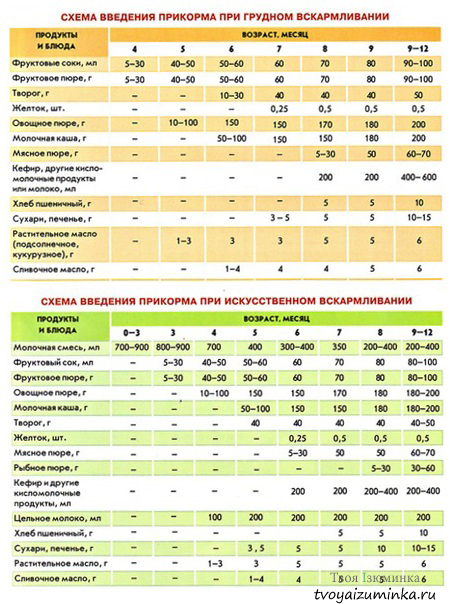
They give an approximate scheme by which you can feed a child from a few months to the first year of life. This scheme has been tested by many years of practice, but you can also agree with your pediatrician on your own, individual option for feeding your baby.
General table of complementary foods for children from 4 months to 1 year by the hour

As can be seen from the above diagrams, the child's body can be replenished with vitamins, starting already 3-4 months - to introduce complementary foods to the child in the form of raw freshly prepared juices. But this must be done very carefully! We must not forget about the rule: when introducing a new product, give it from small doses - from half a teaspoon and bring it to the norm according to the table. Start with just a few drops and continue until breastfeeding or formula. Only after making sure that the frequency and type of stool has not changed, you can gradually increase the dose.
Fruit juice start with 0.5 teaspoon, bring up to 4 teaspoons per day by the end fourth month child and up to 2 - 4 spoons twice a day - in the fifth month. When the daily portion of fresh juice becomes equal to 40 mm, it is better to divide it into two doses.
Juices can be given different, vegetable, fruit and berry, as well as their mixtures. But you need to start with a monocomponent product, for example, with an apple or pear. And then you can already offer carrot, pumpkin, peach, apricot, plum, all of them are rich primarily in vitamins A and C, as well as many trace elements. Of course, you need to watch so that there is no allergy, therefore it is not recommended 4 month old baby give strawberry and citrus juices. Look at two tables of allergenicity of fruits and vegetables, they clearly show that green vegetables and fruits do not cause allergies and it is from them that you can start feeding children.
Tables of the degree of allergenicity of fruits and vegetables
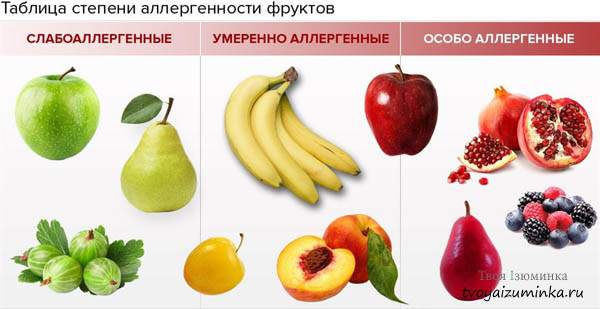
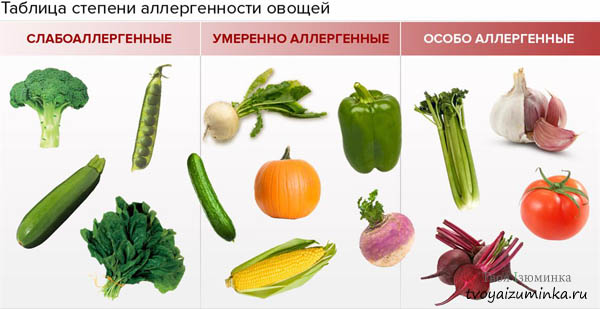
At 4-5 months, you can introduce complementary foods to a child vegetable puree, making it from: cauliflower, zucchini, pumpkin, carrots. As with juices, complementary foods should be started with one product, and then for a change, you can make mixed vegetable purees from two to three different root vegetables. At the same time, it is necessary to observe gradualness, start giving from 0.5 teaspoon in one feeding and bring it up to 100 g - 150 g by the end of 5 months.
How to introduce complementary foods to a child at 6 months
At the age of six months, the child can already independently sit on a high chair, leaning back on it. The kid eats well from a spoon, shows interest in the new food offered to him.
When the child is 5.5-6 months old, regardless of how much milk the mother has, it is imperative to introduce complementary foods. It includes: liquid cereals, vegetable puree, cottage cheese, boiled meat, meat broth, bread. The very first complementary foods can be either in the form of vegetable puree or in the form of porridge, depending on the recommendations of your pediatrician.
You need to introduce complementary foods to a child gradually, starting with a minimum amount - one or two teaspoons of porridge, vegetable or meat puree. Porridge should be given to the baby once a day, before breastfeeding, starting with 0.5 tablespoons and gradually increasing every day, bringing it up to 150 g by the end of the 6th month.
Below is a table of the daily diet when the child is 5.5-6 months old.
Complementary feeding table for children at 5.5-6 months
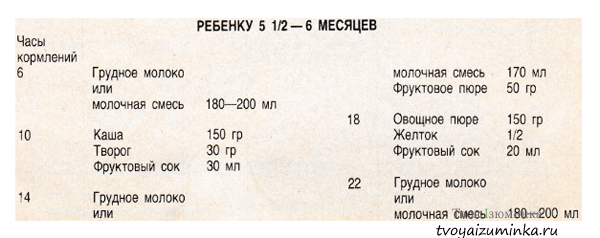
Although earlier recommendations were somewhat different, in Soviet times we were often fed semolina porridge both at home and in the manger. Now baby food experts recommend giving it only after the child is one year old and not more than once a week. Since semolina is inferior in terms of the content of vitamins and minerals in it to the above cereals. In addition, semolina, like oatmeal, is gluten-containing, but inferior to oatmeal in terms of usefulness.
Here, by the way, I already ate my portion of semolina porridge at breakfast :).

As a child, I ate it so much that now on semolina I can't watch.
A six-month-old baby can also cook mixed cereals, for example, buckwheat with rice, add various fruits to the dish. A piece of butter is placed in cereals - 4 g, and vegetable puree - vegetable (sunflower or corn) - 3 g. The composition of vegetable purees is also expanding - white cabbage, potatoes, carrots are added.
Table of input vegetables for feeding children from 5-6 months to a year
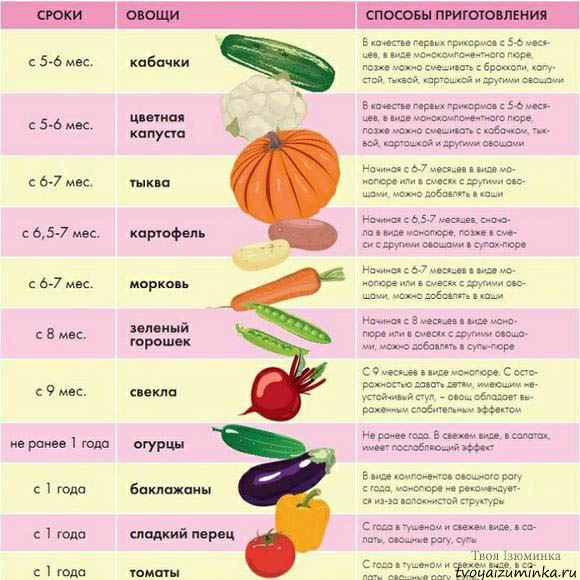
The question of how to properly introduce complementary foods remains the most discussed and controversial in domestic pediatrics. The rules in force in Russian Federation, differ in many respects from generally accepted international ones. The recommendations of doctors of the "Soviet hardening" do not stand up to criticism. What should be the right complementary foods so as not to harm the health of the baby?
There are many myths about the benefits of products for babies in the first year of life. For example, that as early as a month, children need an additional source of iron in the form of apple juice. That fruit purees should not be perceived as a complete complementary food, they serve as “complementary foods”, so you can give them in advance, as early as three months. That at the age of four months it is necessary to include vegetable puree in the amount of up to one hundred grams in the child's diet, and at the age of five months - milk porridge.
Such a scheme, how to properly start complementary foods, operates on the basis of the methodological recommendations of the Ministry of Health of the Russian Federation and the Research Institute of Nutrition of the Russian Academy of Medical Sciences, approved in 1999. However, it has been completely refuted by international studies, the recommendations of the World Health Organization, the International Dairy League.
Causes of controversy
The basic rule of modern international pediatrics says: a child should receive only breast milk or an adapted formula for up to six months. The experts of "La Leche League" somewhat soften this wording, recommending a period for the start of complementary foods by the middle of the first year of a child's life.
Causes of contradictions between international norms and national program feeding children of the first year of life are in the features social development society. “Until the early nineties, the concept of breastfeeding was almost completely lost in Russia,” comments pediatrician Alena Paretskaya. - Often, mothers went to work, leaving three and six-month-old babies in the nursery. Their feeding was organized on the basis of cow's milk, kefir, semolina.
This diet is extremely poor and fundamentally does not meet the needs of the child's body. Somehow, complementary foods allowed him to “smooth out”. From the first month, apple juice was recommended for babies, then fruit purees. In early complementary foods at four months, both eggs and cottage cheese were already present.
The introduction of a whole range of foods before the age of six months served as an opportunity to solve the most important problem - to balance the diet, which lacked breast milk. It was clearly normalized by grams to avoid overfeeding. And in the guidelines for Russian pediatricians, this scheme has been preserved, although it does not meet international standards of medicine today.
AT modern conditions the rules for the introduction of complementary foods in Russia should be revised. Thanks to WHO recommendations, methodological courses for pediatricians and medical workers, the attitude to the issue is changing, but not progressively enough.

Basic principles
Breast milk provides the full range of needs of the baby's body until the age of six months. This conclusion was made by foreign pediatricians on the basis of a number of studies. The American Academy of Pediatrics notes that breast-feeding eliminates the need to introduce early complementary foods. Children simply do not need additional food.
Artificial nutrition also does not require diet correction. “Modern adapted mixtures include a sufficient amount of nutrients, minerals, vitamins. Therefore, the need to introduce complementary foods in more early dates does not exist,” says doctor Alena Paretskaya.
In this way, fundamental principle the introduction of complementary foods in babies on breastfeeding, artificial, mixed feeding is when they reach six months of age. The use of "adult" foods earlier is dangerous by disrupting the digestive system, which is not yet ripe for the digestion of other foods. And the lack of a child of all the nutrients he needs.
International experts also note the following important points.
- Complementary foods do not replace the main food of the baby. Up to a year, breast milk, a mixture, remains such. Breastfeeding, according to WHO recommendations, is important to continue further, up to two years, since breast milk contains valuable components for the maturation of the child's brain, its nervous system, the formation of immunity.
- Feeding is introductory. The established food norms in grams for breastfed children receiving a quality adapted formula are nothing more than a general recommendation, an upper limit. More food than indicated in the norms should not be given in order to avoid overfeeding. Food does not fulfill the function of saturation; breast milk and formula that are more valuable and nutritious for the baby should cope with it up to a year. She introduces new tastes, stimulates the jaw apparatus, socializes the child and teaches him to eat properly.
- Product introduction does not accept violence. Main question how to properly introduce complementary foods to a child lies in the absence of pressure from the parents. Food should be of interest to the baby. In an effort to feed him "by all means", the mother forms a stable model of behavior at the table, in which the child refuses to eat.
- Entertaining and entertaining are two different things.. Feeding with persuasion, under cartoons, with other entertainment has nothing to do with the concept of complementary foods. The kid should show interest in food himself, and this is only possible if he is regularly at a common table with adults. Copying the behavior of adults is a more reliable way to form the right attitude towards food in a child than persuasion and entertainment.
- Look at the baby, not the deadlines. The age of six months is the lower limit of the norm, but it can be adjusted depending on the state of health of the child, the level of his development.
The baby is ready for feeding when he shows interest in food. His ejection reflex has faded, and foods thicker than milk and formula do not cause him to vomit. Eating new foods does not cause digestive disorders. The child himself sits and can hold a spoon.
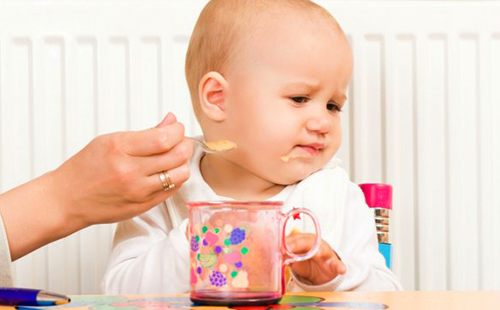
Feeding technique
It often happens that a child is interested in both the objects on the table and the contents of the adult's plates. And even tries to grab something from them and put it in her mouth. But even microdoses of new foods cause problems. If constipation occurs during the introduction of complementary foods, then the child's body is not ready to digest it. Stop loading him with new food, continue to breastfeed or formula feed as usual. And after a few weeks, try offering complementary foods again.
There are also directly opposite reactions: the child categorically refuses to eat anything other than milk or formula. In this situation, it is necessary for the mother to calm down and stop listening to the instructions of her friends or grandmothers.
If the child is healthy, alert, active, but does not want to eat complementary foods, do not insist. His body receives everything it needs from the main source of nutrition. Involve him in family meals, give him a chair, a spoon, a plate, and wait without worry for the baby to show that he is ready to try something new.
Follow the following tactics on how to introduce complementary foods.
- Make sure the baby is healthy. Wait with new food, if the crumbs are teething, there are signs of SARS, fever, the vaccine has been given. The reason to postpone complementary foods is the relocation of the family, the death of loved ones, and other factors of emotional upheaval. You can change the diet only if the child is stable both emotionally and physically.
- Start with the bare minimum. In the technique of pedagogical complementary foods, it is recommended to start with a microdose of the product, that is, an amount from a match head. Pediatric complementary foods allow you to start with half a teaspoon. It is better to offer unfamiliar foods in the morning in order to be able to monitor the condition of the baby during the day.
- Watch baby. An allergy to complementary foods does not appear within a few hours. The reaction occurs a day after the allergen is consumed, and the first "dose" never causes a pronounced rash, peeling on the skin and other symptoms. They appear after the second consumption of the product, so you can find out if the child is allergic to something only on the third day after consuming the new food. Constipation in a child after the introduction of complementary foods may occur during the first day, as well as diarrhea. If you observe these reactions, experiments with the diet must be stopped.
- Gradually increase volume. If the child liked New Product, increase it daily twice to the age norm. You do not have the task of necessarily feeding your child this amount of product per day. This norm is the maximum threshold, beyond which it is impossible to go.
- One product per week. With good tolerance within a week, you can introduce the product into the child's diet. Next week, try to start introducing a new product in the same way. A new product can be mixed with a familiar one.
Take your time! The value of breast milk is incomparably higher for your baby than cereals or vegetables. Do not try to displace even one feeding with them. The components of the "adult" table should complement the diet from a nutritional, energy point of view. But it is to complement, not replace!
At the age of one year, a breastfed child should receive 75% of the nutrition in the form of breast milk. In mixed-fed babies, the mixture is gradually removed from the diet. Complementary foods replace it, while mother's milk remains in the existing volume and is offered on demand. Artificial babies are transferred to the traditional family table after a year.
Product sequence
What should be the sequence of introduction of complementary foods? For a long time in our country, the first component was fruits and juices. Western pediatricians do not share this opinion. Fruit acids, which are part of juices, aggressively affect the child's digestive tract. In addition, they include a large amount of sugar. Therefore, juices are recommended not to be used at all in the nutrition of babies up to a year and older.
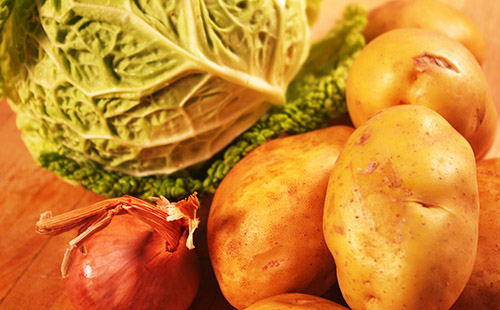
Vegetables - from six months
The product of the first complementary foods for healthy children on any form of nutrition. Use vegetables from your region: neutral zucchini, cabbage, potatoes. A little later, you can introduce the child to carrots, peas, and other legumes. By the year, onions and tomatoes may appear in his diet.
All vegetables are washed, peeled and boiled in a small amount of water. Puree first, then mash with a fork.
| Age, months | Volume, g |
|---|---|
| 6 | 150 |
| 7 | 170 |
| 8 | 180 |
| 9-12 | 200 |
After the introduction of one vegetable, you can fill the puree with vegetable oil in the amount of an incomplete teaspoon.
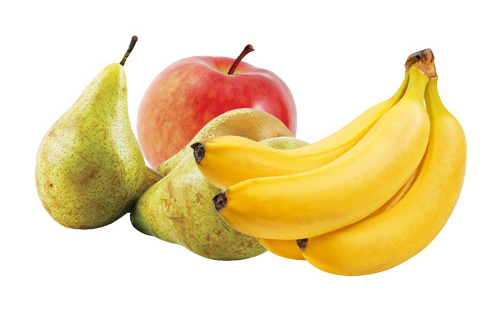
Fruit - from seven months
Traditionally, an apple is introduced first, then prunes, apricots, bananas, pears, and any other fruits in your region. The baby is offered them in the form of mashed potatoes. Usually, children take delicious fruit purees from jars well. This product helps intestinal motility, so the stool after the introduction of complementary foods in artificial animals is getting better.
| Age, months | Volume, g |
|---|---|
| 7 | 70 |
| 8 | 80 |
| 9-12 | 90-100 |
Cooked homemade fruit purees should be peeled and pitted.
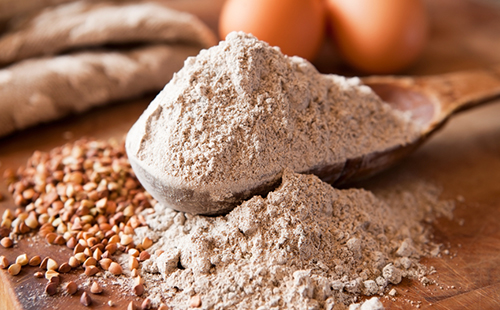
Kashi - from seven months
Porridge can also be a product of the first complementary foods, but for babies with a lag in weight. If the baby meets the age norms, a hearty cereal porridge is introduced after vegetables and fruits.
Use buckwheat, rice and corn grits, as gluten-free products, with a low risk of an allergic reaction. At eight months and older, oatmeal, wheat, millet, semolina are introduced. Prepared on water, without the use of milk, from finely ground cereals in a coffee grinder. Consistency is age appropriate. At the beginning of feeding, the volume of water is 1:4, closer to a year the density of the product is increased, prepared in a ratio of 1:2.
When buying ready-made cereals, they choose dairy-free products for the first complementary foods. It is convenient to use them: just pour the required amount of water and mix.
| Age, months | Volume, g |
|---|---|
| 7 | 150 |
| 8 | 180 |
| 9-12 | 200 |
Closer to the year, you can start cooking milk porridge or milk diluted with water 1: 1.
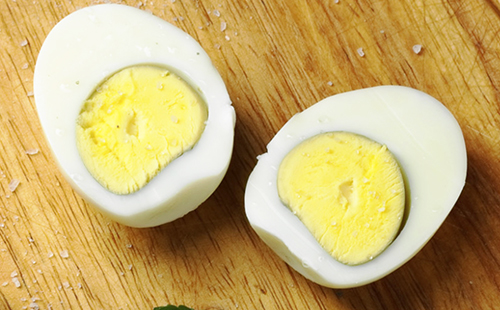
Yolk - from eight months
Useful, but very ambiguous product. In the scheme, how to introduce complementary foods by months Soviet period, is mentioned as early as four months of age. Modern pediatricians recommend introducing it after eight months, carefully observing the reaction of the child.
| Age, months | Part |
|---|---|
| 8 | 1/4 |
| 9 | 1/2 |
| 10-12 | 1/2 |
The yolk is added to porridge or vegetable puree. It is not allowed to mix it with meat complementary foods in one feeding, if it is present in the diet.
Meat - from eight, nine months
Use little allergenic varieties of meat: lamb, turkey, lean pork. There is a higher risk of an allergic reaction to our most popular types of meat: veal and chicken, but this does not mean that they cannot be eaten. In infants, whose mothers often eat these types of meat, a negative reaction occurs less frequently.
The meat is ground in a meat grinder, it can be boiled twice. The new variety is introduced carefully, observing the reaction for five days. Add to vegetable puree.
| Age, months | Volume, g |
|---|---|
| 8 | 30 |
| 9 | 50 |
| 10-12 | 60-70 |
Meat broth is not used in feeding children of the first year of life.
Fish - from ten, eleven months
You can try to introduce fish two months after meeting with meat. Use varieties of low-fat, marine fish. Red is allergenic, therefore hake, pollock, horse mackerel and other varieties of fish with an inexpressive smell, slightly dry structure are more preferable.
| Age, months | Volume, g |
|---|---|
| 10 | 30 |
| 11 | 50 |
| 12 | 60 |
The fish is boiled, cleaned of bones. Served with a vegetable side dish. At this age, the baby already chews food well, so you don’t need to grind it specially, just leave it in small pieces.
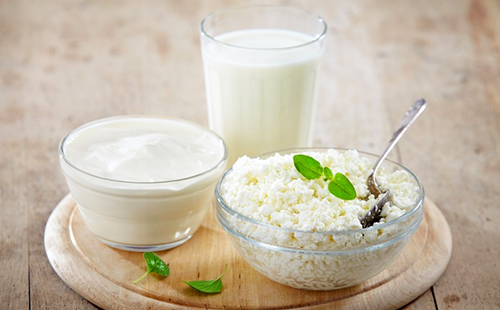
Cottage cheese, kefir - from ten, twelve months
Dairy products may appear in children's menu closer to one year of age. They contain a foreign protein, for the breakdown of which the baby's body learns to produce enzymes only after ten months.
| Age, months | Volume, g |
|---|---|
| 10 | 30 |
| 11 | 40 |
| 12 | 50 |
For children receiving breast milk or formula, the relevance of dairy products in the diet is not so high. It is more important for artificial people to include cottage cheese in the menu for up to a year so that the body has time to adapt to this product before the mixture is excluded from the diet.
From ten months, the baby can be offered a cracker or dryer as a snack. Juices include in the menu after a year, but their value is exaggerated. Homemade compotes are more useful for children.
Breastfeeding consultants advise mothers to food diary, in which to indicate which product was introduced and in what quantity the child ate. This is true for babies prone to allergies, as it will allow you to accurately identify dangerous foods.
The questions of when to start, how to choose, how to prepare complementary foods for babies are incredibly important. Not only the feeling of satiety of the crumbs at the moment depends on them. This quality is secondary, especially since before the one-year-old period, children do not associate food from the “plate” with a food source at all.
More importantly, teach the baby to eat on his own, instill in him respect for food, an understanding that food is pleasure, joy, the ability to behave like adults. The absence of violence from the mother, perseverance and demands to be sure to eat everything “to the last drop” is the right tactic that will help with this.
According to the recommendations of the World Health Organization, it is optimal to give the first complementary foods to a baby at 6 months. It is at this age that the supply of iron in the child’s body is depleted, and this element also becomes insufficient in the mother’s milk. In addition, the baby's digestive system is already ripe for the digestion of fats, proteins and carbohydrates in non-dairy foods, as its own digestive enzymes begin to be produced. The first chewing movements appear in the child, the gag reflex moves from the middle to the posterior third of the tongue, and the baby stops reflexively spitting out thick food from the mouth.
Rule 2. It is better to start feeding your baby with vegetables.
With what product should you start the first complementary foods? The advice of pediatricians and nutritionists boils down to starting complementary foods with vegetable puree. This recommendation is explained simply: cereals are closest in taste to breast milk, so babies like them more. Having become accustomed to such complementary foods, babies may subsequently refuse less tasty (or simply unfamiliar) vegetable puree. Especially green vegetable puree is recommended for children prone to constipation and overweight.
Attention! If a child has loose stools, lack of weight, he suffers from colic, then the introduction of vegetables can aggravate the situation. In this case, choose porridge as the first complementary food.
What vegetables to choose?
For the first feeding with vegetables, low-allergenic fruits, such as zucchini, cauliflower, patisson, broccoli and pumpkin of light varieties. A little later (from about 7–8 months), you can add potatoes, carrots, white cabbage, beets. A little later (from about 7–8 months), you can add potatoes, carrots, white cabbage, and beets to the diet of crumbs. The introduction of complementary foods begins with a one-component puree, which does not include salt, sugar, thickeners, from 1–2 teaspoons (10–20 g). Gradually, within 7-10 days, increase the portion to the age norm - 100-150 g.
Rule 3
The next product that can be introduced into the baby's complementary foods will be cereals. According to modern recommendations, porridge is introduced after the child adapts to his first complementary food - vegetable puree. This occurs no earlier than 3 weeks after the start of introducing vegetables into complementary foods.
The first to be introduced into the baby's menu are low-allergenic cereals that do not contain gluten (rice, buckwheat, corn). Gluten (gluten)- vegetable protein, which is part of the shell of the grain of wheat, oats, rye and barley. It is difficult to digest in the immature intestines of babies. As a result, with the early introduction of gluten-containing foods into complementary foods (especially before 6 months), the child may experience abdominal pain, bloating, impaired stool, skin rashes, and other negative reactions. In rare cases, if there is a hereditary predisposition, the baby may develop a severe disease of celiac disease, requiring a gluten-free diet (elimination of all foods containing gluten) for the rest of his life.
- Buckwheat It is gluten-free and an excellent source of highly digestible plant-based protein, making it a great starter to complementary foods. Due to the high content of fiber and a small amount of starch, this porridge perfectly stimulates the intestines, so it is especially useful for babies who have constipation.
- Rice It is considered a hypoallergenic product, so it is better to start with complementary foods for children prone to food allergies. Due to the high content of starch, rice porridge is well absorbed and does not irritate the gastrointestinal tract, so it is useful to give it to babies with unstable stools, but to children suffering from constipation and having excess weight, do not offer it too often.
- Corn porridge hypoallergenic and high-calorie. Cooked on its own, it turns out to be too hard to digest, but industrial-made porridge is easier to digest (since corn grains have been specially processed), besides, it is enriched with vitamins and, due to the absence of gluten, is suitable for the first complementary foods.

How to introduce porridge into complementary foods?
The principles of introducing cereals into complementary foods are the same as for other types of complementary foods - start with one type of cereal (from 1 teaspoon), gradually increasing its amount to 120–150 g. A week after the introduction of the first cereal, try another type, even later - you can switch to porridge from a mixture of cereals. Porridge for the first feeding should be dairy-free. They are bred breast milk or formula fed to the baby. Milk porridge for complementary foods is introduced into the child's diet at 8–9 months, and salt and sugar should not be added until at least 1 year old.
Rule 5. Not all meat is suitable for complementary foods
At 8-9 months, you can introduce meat into complementary foods. What is the most valuable meat for a baby? First of all, it is lean beef, pork, poultry, rabbit. But when introducing meat complementary foods, some features must be taken into account. So, in terms of nutritional properties, beef is a very valuable product, but if a baby is allergic to cow's milk protein, then the same reaction may be to beef. Veal and chicken meat for meat complementary foods, despite their tenderness, ease of digestion, can cause the same problem. Pork is more fatty meat, but if the baby is allergic to beef and chicken, it can be offered as a replacement for these products. Turkey and rabbit meat are hypoallergenic, they are quite suitable to start feeding meat with them. The baby is accustomed to the full volume of meat puree gradually, starting, as usual, with an incomplete teaspoon and slowly bringing the volume of the meat dish to 30-50-70 ml, depending on the age of the crumbs (70 ml by 1 year).
Rule 6. Fruits in complementary foods: not all at once
At 7.5 months, you can offer your baby the first spoonful of fruit puree. Domestic pediatricians recommend starting complementary foods with fruits from a green apple or pear - they are less likely to cause allergic reactions. If the baby has had manifestations of allergies or his stool is unstable, then it is better to introduce him first to less allergenic apples, pears or bananas. And if the baby has constipation, you can first offer prunes or apricots.

How much fruit puree can you give your baby per day?
The daily norm is equal to the child's age in months, multiplied by 10 (for example, the volume of fruit puree per day for a child of 10 months is 100 g).
Based on the same principles, they introduce and fruit juices. The first to give one-component clarified juices without pulp (usually green apple juice), starting with a few milliliters and gradually bringing the volume to the age norm - babies 10-12 months old can be given 80-100 ml per day.
Rule 7. Only special cottage cheese is suitable for feeding a child
Cottage cheese is one of the first fermented milk products that can be offered to a baby. Offer the first spoonful of cottage cheese to a child when he is 8-9 months old. Unlike kefir, this product has low acidity and does not irritate the delicate intestinal mucosa of the crumbs. Remember that in the diet of children under 1 year old, you can use only special types of cottage cheese that are intended for this age. Children's cottage cheese is produced using a special technology, thanks to which all beneficial features and it has a more delicate texture compared to the usual "adult" product.
In the absence of negative reactions to cottage cheese, its amount is adjusted to 40 g within 5–7 days, and up to 50 g by 9 months. This amount should not be exceeded, since with an excess of protein, the burden on the kidneys of the crumbs increases, which can lead to violations in their work.
Rule 8. Fish menu for kids
Every mother thinks about what kind of fish to start complementary foods with. Despite the beneficial properties, fish appears on the baby’s menu only by 9-10 months, and if the baby suffers from allergies, then acquaintance with this product should be postponed until 1.5 years. The fact is that fish protein is a strong allergen, and this type of complementary food should be treated with extreme caution. In the first year of life, you can only give fish healthy babies who are not allergic to other products.
What fish to start with?
Hake, cod, haddock, pollock, flounder are considered suitable for a first acquaintance. They are dietary and less allergenic, in addition, they have very few small bones. A baby up to a year old can be given about 30-60 g of fish puree per day and no more than 1-2 times a week.
Attention!
Complementary feeding means feeding babies foods in addition to breast milk. But during the entire period of introduction of complementary foods, breast milk should remain the main food of the child.
Mothers of babies 3-4 months old often wonder - is it time to think about the introduction of complementary foods? The time the baby is ready to get acquainted with new food is determined individually. It depends on the development, type of feeding, health status, tendency to allergies, speed of weight gain.
After the baby is four months old, mothers begin to think about the introduction of complementary foods.You should not be ahead of the deadline for the introduction of complementary foods and offer products that are inappropriate for age. After that, digestive problems, allergic reactions are possible, which will eventually delay the introduction of complementary foods. Some doctors insist on adding apple juice and cereals to the diet from 3-4 months. Others, on the contrary, recommend waiting for the appearance of the first teeth. It is important for the mother of a baby to listen to their opinion, but to trust only her intuition and conclusions from observations of the child.
Criteria for breastfeeding readiness
Five-month-old babies actively explore the world and show interest in everything that is on the kitchen table. If one of the parents holds the child on the handles in the kitchen, he is interested in everything - napkins, spoons, food. This is a healthy interest in the world around you, but should not be taken as a signal for the introduction of complementary foods. The readiness of the child for breastfeeding for new food is evidenced by:
- an increase in weight by 2 times from what it was at birth (3 times in premature babies);
- the baby is not fed up with breast milk;
- the appearance of the first teeth;
- the child takes food from the table, puts it in his mouth, tastes it;
- extinction of the tongue thrust reflex - the child can chew with his gums without experiencing a gag reflex and without pushing food back;
- the baby can show with a gesture which piece you want to try;
- after the baby has tried adult food, he does not have constipation, indigestion.
 Eruption of the first teeth - an indication of readiness for complementary foods
Eruption of the first teeth - an indication of readiness for complementary foods When should we postpone the introduction of complementary foods?
A proportion of breastfed infants are not ready for complementary feeding at 6 months of age. This is due to the peculiarities of weight gain, development, readiness of the gastrointestinal tract to assimilate new products. With complementary foods, you should not rush in such situations:
- the child was born by caesarean section;
- the baby is often sick;
- vaccination period;
- allergic manifestations;
- pathologies in the development of the central nervous system;
- low weight gain;
- hot summer weather, flowering period of allergenic herbs.
With complementary foods, you should also not rush during the period of acclimatization at a new place of residence. lagging behind calendar plan and from peers there is nothing to worry about. The child will make up for everything in due time. It is important for mom to continue to feed him with breast milk, tracking the increase in height and weight.
 During the vaccination period, it is better to refrain from additional stress in the form of new food.
During the vaccination period, it is better to refrain from additional stress in the form of new food. At what age should a baby be fed?
To date, there are uniform rules developed by WHO. They indicate that a child on breastfeeding does not need supplementation and complementary foods in the first 6 months. Until six months, it is not recommended to offer the crumbs anything other than breast milk. In some cases, babies start feeding at 7-8 months and later. Babies on mixed and artificial feeding you can introduce new tastes in 4-5 months.
Modern feeding schemes
Specialists have developed two schemes for complementary feeding of infants: pediatric (traditional) and pedagogical. The first involves the gradual introduction of certain products. Initially, they are offered in a small volume, leading within a week to the age norm. This method helps to gradually displace breast milk from the diet and prepare for the transition to a common table.
Pedagogical complementary foods involve receiving complementary foods in small portions from the parent's plate. At the same time, the child gets acquainted with the foods that are loved in the family. However, formula or breast milk remains the main food by the year. Most mothers who want to quickly transfer their children to adult food and are interested in at what age this can be done choose pediatric complementary foods.
 Pedagogical complementary foods allow the child to taste dishes from the parent's table
Pedagogical complementary foods allow the child to taste dishes from the parent's table complementary feeding schedule
Which product is best suited for complementary foods baby? Pediatricians used to recommend fruit juices to mothers. However modern research showed that these drinks are heavy on the gastrointestinal tract of infants. Doctors recommend these safe and nutritious complementary foods:
- Gluten-free cereals made from buckwheat and rice cereals. The grain is ground into flour and a liquid porridge is boiled or ready-made children food, which must be diluted with water (a portion of baby milk). With cereals, they begin to feed children who are not gaining weight well.
- Vegetable puree. Ideal vegetables for the first feeding are hypoallergenic zucchini, potatoes, cauliflower. Puree should be prepared without salt and other flavoring additives. it the best option initial complementary foods for babies who are gaining weight normally.
- Dairy products. According to Dr. Komarovsky, baby kefir and cottage cheese are the most correct option for the first complementary foods, since their composition is very similar to mother's milk. The digestive system of infants perceives fermented milk products well. With them, you should start feeding premature babies, allergy sufferers and children suffering from dysbacteriosis.
 Dairy products can be a great complementary food option
Dairy products can be a great complementary food option Complementary feeding table for breastfeeding
It is worth introducing the baby to new products in the morning, in order to follow his reaction to the dish during the day. The first servings should not be more than a teaspoon. Perhaps the baby will like the dish and he will express a desire to try more, but you should not offer more than it should be. If the introduction of complementary foods was successful, the volume of the dish is gradually increased, replacing one of the feedings with it. The table-scheme shows the types of products and the period of their introduction into the diet of a breast-fed baby:
| Baby's age | Dish consistency | Permitted food items | Feed features |
| 6 months | Liquid or sour cream consistency. | Zucchini, cauliflower, potatoes grown in the region of residence. It is offered in the form of monopurée without salt, and later two types of vegetables are mixed. | Suggest from 2-3 grams per day, bringing up to two tablespoons during the week. Closely monitor the work of the digestive system. |
| Seven months | Gluten-free unsalted cereals made from buckwheat, rice, cornmeal. They are cooked in water, vegetable broth, breast milk or an adapted mixture. If the baby is not gaining weight well, cereals are introduced into the diet before vegetables. | They offer 1-2 times a day for a teaspoon, bringing the portion during the week to 3 tablespoons, and by the year - 150 ml. | |
| 8 months | Puree-like consistency (mashed or blended products). | Lean meat: veal, pork, chicken, rabbit. The meat is boiled, chopped through a blender or meat grinder. Sour-milk products intended for baby food are also gradually introduced. | Chicken yolk (quarter) is mixed into ready-made dishes 1-2 times a week, doubled by the year (fed by half). The meat is cooked in the form of mashed potatoes, offered with a side dish of ½ teaspoon, bringing up to 30-50 grams in a week. Yoghurts and cottage cheese are introduced carefully, by the age of one the baby should receive 100 g of cottage cheese or 150 grams of kefir per day. |
| 9-11 months | Puree-like consistency (mashed or blended products). | Fish: hake, flounder, trout, hake, cod. Chicken yolk. Oatmeal, bread, crackers. | The fish is introduced from 5 grams, gradually increasing to 100 grams. Meatballs are prepared from it, which serve as a good addition to a vegetable or grain side dish. |
| 12 months | Chopped food without salt and sugar. | Fruit and vegetable juices made from green apples, peaches, plums, apricots. Initially single-component, then mixed (apple-carrot, apple-apricot and others). | Initially offer ½ tsp. juice. The portion gradually increases and by the year is about 100 grams. |
What are the guidelines for offering complementary foods?
It is important to offer the child only freshly prepared dishes, serving them in a beautiful bowl or saucer. You should not feed your child from your plate and spoon - the devices can be dangerous for the digestive tract and oral cavity bacteria. The following rules will help to avoid problems with the assimilation of products:
- fresh organic products and young vegetables are selected for complementary foods;
- a new dish is offered during breakfast or lunch before breastfeeding;
- products are administered one at a time, from small doses, monitoring the reaction of the crumbs for 12 hours;
- with a negative reaction, the dish is canceled;
- gradually the volume is brought to the prescribed age;
- if the baby likes "adult" food, you should not stop breastfeeding.
After the baby tastes the porridge, butter should be added to them (about 3 grams). You can not offer up to a year old mushrooms, exotic fruits, honey, tea, nuts.
Tracking the time, volume and amount of complementary foods will allow a food diary, which is recommended to be kept during the first three years of life. It is worth recording how much, when and what foods the baby ate, as well as fixing, after which a negative reaction was noted.
 Exotic and allergenic fruits are best introduced after 1 year
Exotic and allergenic fruits are best introduced after 1 year Plan for the introduction of cereals at 6-7 months
At 6 months, the baby is offered vegetables or cereals before breastfeeding, gradually replacing one feeding with a dish. Any dish should be offered from a spoon, the use of bottles and nipples is unacceptable, no matter how convenient it is for mom. If the baby is not gaining weight well, cereals are given from 5-6 months, adhering to the following scheme:
- They offer porridge daily for breakfast, without salt and sugar. At first, the consistency of the dish should resemble breast milk, gradually it becomes thicker.
- First week - buckwheat porridge cream consistency is offered for testing in the morning in the amount of 1 teaspoon. If there is no negative reaction, 2-3 teaspoons are offered on the second day. On day 4, the consistency is made thicker (like sour cream), the baby can already eat 5 teaspoons. By the end, a serving of creamy porridge should be 100 g per day.
- Second week - give rice porridge according to the same system as buckwheat, or alternate buckwheat and rice, bringing the amount of rice to 100 grams per day.
- The third week - introduce porridge from cornmeal. The feeding schedule is the same as for rice and buckwheat.
- Fourth week - oatmeal is introduced, following the reaction of the crumbs. The dish contains gluten (a vegetable protein that not all children digest).
- subsequent weeks. A dish of porridge gradually replaces one feeding with milk.
 Over time, complementary foods with porridge replace full-fledged feeding.
Over time, complementary foods with porridge replace full-fledged feeding. Plan for the introduction of vegetables at 6-7 months
Similarly to cereals, a plan for the introduction of vegetables is prescribed, carefully boiling them and preparing monopure. It is better to start with a young zucchini or potatoes. Vegetables containing carotene (pumpkin, carrots) are offered after 8 months. With the introduction vegetable complementary foods you should follow this pattern:
- The first week is the introduction of squash puree into the diet. The vegetable is boiled and chopped with a blender (fork, sieve). The first day give ½ tsp. puree. On the second day, it is allowed to add a drop of vegetable oil and offer 2-3 tsp. before breastfeeding. For a week, the volume of complementary foods should be reduced to 60 grams.
- The second week - boiled cauliflower is added. First give only 1 tsp. cauliflower puree and 6 tsp. zucchini puree, monitor the reaction of the crumbs. This portion can replace lunch, but the baby should be supplemented with milk. On the second day, the volume of cauliflower is increased to 2-3 tsp. and supplement with 5 tsp. zucchini puree. By the end of the week, the cauliflower puree is replacing the zucchini.
- The third week is the introduction of potatoes. First, they offer the baby 1 tsp for lunch. mashed potatoes and 6 tsp. zucchini. On the second day - 2 tsp. potatoes and 4 tsp. cauliflower. By the end of the week, the serving of potatoes should be 7 tbsp.
- Fourth week - alternate vegetables, try to introduce boiled carrots. It is offered from ½ teaspoon, bringing it up to 2-3 tsp. in a day. It is not necessary to replace all complementary foods with one carrot puree. It is undesirable to change the order of introducing zucchini, potatoes, cauliflower, but it is possible.
 Carrot puree is given in the fourth week of complementary foods
Carrot puree is given in the fourth week of complementary foods Is it possible for a baby to have semolina porridge as a first complementary food?
With low weight gain by an infant, Soviet pediatricians often recommended that mothers of infants start complementary foods with liquid semolina. Disciplined parents gave semolina to newborns from almost two months. What do modern doctors say about this? Gastroenterologists believe that it is undesirable to try semolina up to a year old, since the gastrointestinal tract and enzymatic system of babies are not ready to digest it. An exception is underweight babies (they are allowed to try semolina from the 9th month).
Baby needs semolina, but it prevents the absorption of calcium, which is necessary for the formation of bones, teeth, and muscle mass. Her presence in the children's menu should not be more than once every 10 days up to 3 summer age. Since cow and goat milk is not recommended for children under 2.5 years old, the porridge recipe should be based on an adapted mixture or water. At 1.2-1.5 years old, you can use baby milk diluted with water 1 to 1.
The baby refuses to try complementary foods: what to do?
It happens that the child categorically refuses to try complementary foods from a spoon, spits out food. Sometimes he even vomits, which causes serious concern for mom. Experts advise not to be afraid of gag reflexes. They have a functional origin and usually occur when the period of breastfeeding is prolonged.
- it is necessary to offer complementary foods after an active walk, when the child is hungry;
- take into account taste preferences: some children like light mashed potatoes, others eat yogurt, buckwheat porridge with great pleasure;
- if the new dish was not to your liking, the child is fed with his favorite food, and they return to the “rejected” product after a few days;
- you can feed the baby at the common table, demonstrating how the whole family eats with pleasure.
It happens that the baby refuses complementary foods when his teeth are cut, his tummy hurts. Children lose their appetite after catching a viral infection. Her symptoms (cough, runny nose, fever) appear later, and the first wake-up call is just the lack of appetite. Mom should be attentive to any situation when the baby does not want to try complementary foods. Patience and care will help to overcome all difficulties, introduce healthy foods into the baby's diet by the age of one.
The topic of the introduction of complementary foods is a field for all sorts of conjectures and myths. What are they trying to feed the little ones! For example, it is argued that fruits in the form of purees and juices are not the first complementary foods at all, but only its predecessor, and that they are quite suitable for babies at 3 months old. There is an opinion that at 4 months the baby should already eat vegetable puree in the amount of 100 grams, and by 5 months - master porridge in milk.
Some people, from a lack of awareness, try to offer vegetable puree to children as early as 1-3 months.Such a feeding technique existed before, it was approved by the Ministry of Health and the Research Institute of Nutrition of the Russian Academy of Medical Sciences back in 1999, but a lot of time has passed since then and science has refuted all these provisions. Today, the introduction of complementary foods is carried out according to the recommendations of the WHO and the International Dairy League.
The question of the first complementary foods is very burning, so today we will dwell on all the exciting moments in detail. Let's talk about the timing of the start of complementary foods, signs of readiness of the body and other important facts.
Early feeding
A breastfed baby does not need any additional nutrients until the age of 6 months. This has been proven in a number of scientific studies by European pediatricians. Scientists at the American Academy of Pediatrics are convinced that breastfeeding does not require early introduction complementary foods. Babies get everything they need from their mother's milk. The meaning of introducing early complementary foods to newborns is determined only by a number of weighty indications. Until the age of 4 months, the child's gastrointestinal tract does not yet have the necessary enzymes that could digest food. Sometimes these enzymes appear only by 6 months, and sometimes only by one and a half years.
What is the danger of feeding too early? It is important for all caring parents to know that the earlier the first complementary foods are introduced, the greater the likelihood of digestive difficulties in the future and the higher the risk of allergic reactions.
 Early feeding can cause severe allergies in a child
Early feeding can cause severe allergies in a child This is due to the fact that the intestines of babies are in an immature state, in the process of development. The food introduced as complementary foods cannot be normally absorbed by the newborn due to a lack of enzymes, which means that the baby is not saturated. The World Health Organization has conducted a number of studies, during which it was found that early and premature start of complementary foods increases the risk of getting pneumonia and multiple otitis by several times. This is due to the fact that the overall resistance of the body is lower.
Children who received only mother's milk up to six months, compared with peers who had already received their first complementary foods by this age, mastered crawling and walking much earlier. When should you start introducing complementary foods to your baby? Based on all the data obtained, pediatricians in most countries, including Russia, came to the conclusion that the most appropriate time for the introduction of complementary foods is from 6 months.
Basic principles
How to introduce complementary foods correctly? At what age can a child be fed? The main condition for the start of complementary foods is that the child is six months old, regardless of the type of feeding. Breastfed, formula-fed or formula-fed infants should receive complementary foods based on the following important factors:
- The main food is milk or a mixture. Be sure to keep breastfeeding or formula feeding as a priority for up to a year. WHO experts are convinced that breastfeeding is justified up to two years of age and beyond. Such conclusions are based on studies of the composition of breast milk, which, with the growth of the crumbs, adapts to the changing needs of the child's body. It contains useful substances for the proper formation of the brain, nervous and immune systems.
- Complementary foods are introduced for familiarization. In no case should the volumes indicated in the norms be exceeded, otherwise there is a danger of overfeeding the child. The first feeding of the baby is not intended to saturate; for this, breast milk or an adapted formula is preserved, which have a great nutritional value. Adult food allows you to introduce the baby to a variety of tastes, helps to teach correct work jaws, ensures the socialization of the baby and teaches proper food intake.
- No violence when introducing new products. The introduction of complementary foods should be based on the desire and interest of the child in food.
- Do not use recreational methods when feeding. Fairy tales, jokes, and even more so cartoons are absolutely inappropriate at the table. The child should be interested in the new process, and this can be achieved by regularly placing the baby at the common parental table.
- Pay attention not to the deadlines, but to the child. Starting from six months, you can start the first initial feeding, but if the child is not yet ready, there is no need to rush and artificially adjust it to the indicated norms. Focus on the level of his health and development.
Signs of readiness to introduce complementary foods
External indicators of the baby's readiness for new food:
- ability to sit independently;
- the appearance of several teeth;
 The appearance of the first teeth - a signal of readiness to chew food
The appearance of the first teeth - a signal of readiness to chew food - the food ejection reflex disappears: the food that enters the baby's mouth is no longer pushed back by the tongue;
- weight gain two times relative to data at birth (for premature babies, this figure should triple);
- the baby may turn away if he does not like the food;
- the number of attachments to the breast increases, and when fed with a mixture, the baby is still hungry;
- the time of interest in the contents of mom and dad's plates begins.
Types of complementary foods
- Pedagogical. When a baby begins to show interest in adult food, this does not mean that he is not saturated with what is available. He is attracted to the pleasure that parents experience while eating, and he wants to experience something similar. The principle of pedagogical complementary foods is to feed the baby with microdoses of all the dishes that adults eat. The dose is equal to the volume of a match head.
- Pediatric. traditional look complementary foods according to WHO recommendations. New food is offered in small doses of ½ teaspoon.
 With pediatric complementary foods, the child is gradually offered different types food
With pediatric complementary foods, the child is gradually offered different types food Feeding technique
How to introduce complementary foods to a baby? Feeding rules are as follows:
- The child must be healthy. Teething, colds, viral infections, fever, time to prepare for vaccinations or immediately after vaccinations - all of these factors indicate the impossibility of starting food trials.
- Initial doses are minimal - from ½ teaspoon. "Adult" food is offered before formula or breast milk. The portion size is gradually increased.
- Attention to the well-being of the child. A possible allergy is not a matter of two hours, it can manifest itself much later. Follow the child for two days after the introduction of a new product. Most often, after the first feeding, a negative reaction of the baby's body is a rare occurrence. The most likely occurrence of a rash or peeling after repeated use. As a rule, it is possible to notice something wrong only by the third attempt to try the introduced product. Reactions such as constipation or diarrhea can manifest themselves within the first day. Any ailments in the baby require the immediate cancellation of the novelty.
- The volume increases gradually. Do not set yourself the goal of feeding the baby with the amount indicated in the norms - this is the upper limit. It is impossible to give more than this, but less - please.
- No more than one new product per week. In the first week, the child has an increase in the volume of new food, in the second - getting used to it, and only from the third week is it allowed to introduce another new food.
- It is strictly forbidden to offer two new products at once.
- Lack of interest in the product or unwillingness to eat it requires some pause. Try again after a few days.
 Only mono-component purees can be used to test new products.
Only mono-component purees can be used to test new products. Product sequence
In what order should new foods be included in a child's diet? For many years, fruits in the form of purees and juices have been the best products. Experts in the field of pediatrics in European countries consider this approach to be extremely wrong. The acids contained in fruits have an extremely negative effect on digestive system baby. In addition, there is a lot of sugar in fruits, so they are generally not recommended for introduction into children's diets under the age of one.
Starting from the age of six months, the child begins to experience a lack of a number of minerals, including zinc and iron. To make up for this deficiency in a baby, complementary foods are recommended to start either with cereal cereals or with vegetables that contain easily digestible forms of these microelements.
In the presence of poor digestion, combined with liquid stool, it is better to start with cereals, and with a fixed chair - with vegetable purees.
The second part of feeding will be either vegetables or porridge, and the third part will be meat puree, after which we will introduce everything else into complementary foods. The second complementary foods are offered to the baby at the same time as the previous one. Below we will talk about the timing of the introduction of complementary foods.
 Meat puree is introduced into the diet only after vegetables and cereals
Meat puree is introduced into the diet only after vegetables and cereals Vegetables - from 6 months
Children on any type of feeding in a healthy state receive vegetable puree as the first product. We first introduce vegetables that grow in the region of residence into complementary foods: zucchini, potatoes, cabbage. Further, babies are fed with carrots and legumes. Closer to the year, introduce your baby to tomatoes and onions.
All vegetables are pre-washed in running water without the use of soap, then peeled and seeds are removed. Prepared vegetables for the first feeding of the baby are cut into small pieces. Before cooking, potatoes are recommended to be soaked in cold water so that it loses all the starch. You can cook your own meals in several ways:
- For a couple. This method of cooking is considered the most useful.
- In the oven. Chopped vegetables are laid out in the form, almost half filled with boiling water. Cover the top with foil and let cook until done.
- In a saucepan. Pour water into the container, wait for it to boil, put the vegetables and cook until cooked under the lid.
All vegetables are prepared in different ways: zucchini - 5 minutes, pumpkin and cauliflower - 10 minutes, carrots and potatoes - 25 minutes. According to the recipe, boiled vegetables should be ground with a blender or rubbed through a sieve, then adding a little broth to make the consistency uniform. Having crushed everything with a crush, it will not be possible to get rid of hard-to-chew fibers, so it will be difficult for a child to eat such mashed potatoes. You can add milk or a mixture to the puree for flavor. Avoid sugar and salt. Start adding vegetable oil to your baby's meals 1.5 months after the start of the introduction of complementary foods. Remember that this product is also new, so be careful when entering it.
Kashi - from 7 months
When the baby is gaining weight poorly, porridge can be offered first. For children whose indicators correspond to the norms, cereal cereals should be given after the development of vegetables and fruits by the crumbs.
First, gluten-free cereals are introduced: rice, buckwheat, corn, because the risk of allergies when eating them is minimal. For children older than 8 months, it is allowed to cook millet, oatmeal, semolina. The cereal is pre-ground in a coffee grinder, and then boiled in water without adding milk. At first, the consistency of porridge is more liquid, corresponding to the proportion of 4 servings of water per 1 serving of cereals, and closer to the year, the porridge is made thicker, reducing the amount of water to 2 parts.
When purchasing ready-made cereals for children, make a choice in favor of dairy-free products. Such cereals are very convenient for cooking: the contents are poured with a small amount of water and mixed for uniformity. Treat a one-year-old baby with cereals in milk, prepared in a 1: 1 ratio with water.
Is it possible to cook porridge for the introduction of complementary foods on my own? You are able to do everything yourself, only before cooking the cereal should be processed:
- cereals are washed in water;
- dried in the air or in the oven;
- grind dried beans in a coffee grinder.
Ground flour should be stored in a jar with a closed lid. The recipe for this is:
- Pour 100 ml of water into a saucepan and bring to a boil.
- Put a teaspoon of porridge in a small container, pour 2-3 tablespoons of cool water, mix thoroughly.
- Pour diluted porridge into boiled water, mix and cook over low heat for about 20 minutes. When cooking, porridge should be constantly stirred. By pouring ground porridge into boiling water, you can end up with lumpy porridge.
- After this time, the fire must be turned off and let it brew for about 15 minutes. During this time, the grains will swell, and after cooling, the porridge should be served at the table. You can dilute the porridge with breast milk or a mixture. Do not add salt, sugar, butter, or cow's milk to the first cereals.
 The first cereals should not contain salt or sugar
The first cereals should not contain salt or sugar Fruit - from 7 months
The introduction of complementary foods on the menu continues with fruit. Usually fruit purees are tried by children in the following sequence: apple, prunes, apricot, banana, pear. You can supplement them with any fruit that grows in your area. Crumbs with great appetite eat canned purees. They help to improve the functioning of the intestines, so the problems with digestion that existed before immediately disappear. Cooking fruit puree at home, remember that it is better to pre-clean all products from the skin and seeds.
Meat - 8-9 months
Meat purees are offered from low-allergenic meats: turkey, lamb, lean pork. Those varieties that are now the most common have a higher allergic index: chicken, veal. You can still eat them, but keep in mind that children whose mothers regularly ate the specified meat, the risk of negative consequences will be much lower.
Fresh meat should be passed through a meat grinder twice, and then boiled. Meat, like any new product, is introduced in small doses. Carefully observe the reaction of the child's body to the novelty. Meat broths are not prepared for children under one year old.
Yolk - from 8 months
relation to this useful product complex and ambiguous. In Soviet times, it was recommended for introduction as early as 4 months, but now the timing of the introduction of complementary foods from the yolk has moved closer to 9 months. When testing, be sure to monitor how the child's body reacts to a new product. You can enter it by adding it to cereals or vegetables. It is undesirable to make meat purees with yolk.
Cottage cheese, kefir - from 9-10 months
How many months should a baby be to be ready for cottage cheese and kefir? Approaching the age of 1 year, mothers begin the introduction of dairy products. The protein of cow's milk is foreign to the child's body and the enzyme required for its breakdown appears in the intestine only after 10 months of age. Babies who receive either mother's milk or an adapted formula do not have much need for dairy products. For children on an artificial type of feeding, the introduction of cottage cheese into the diet even before the year is more justified, because their body must have time to readjust to the processing of this food before the mother removes the usual mixture from the diet.
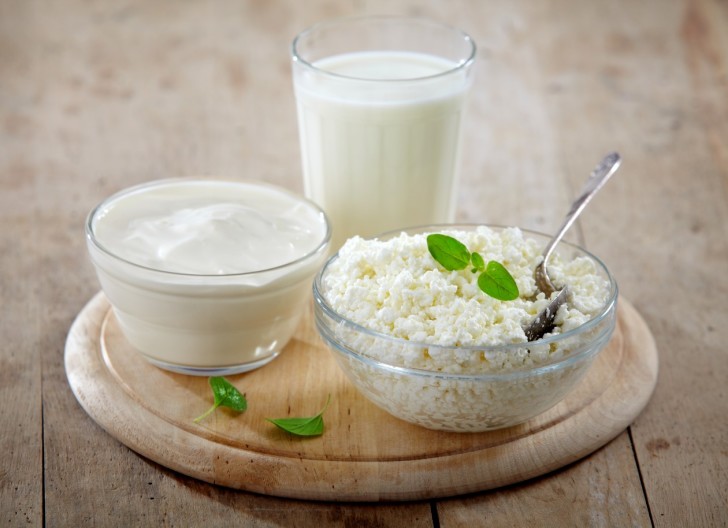 It is better to introduce dairy products on the menu by the year
It is better to introduce dairy products on the menu by the year Fish - from 10-11 months
A couple of months after the development of meat dishes, fish should be introduced into the menu. For proper complementary foods lean sea fish is ideal. Red varieties of fish are considered more allergenic, so pollock, hake, horse mackerel and the like should be preferred, which have a slight specific smell and a drier structure.
Boiled fish should be cleaned of bones. It is usually served with vegetables. As a rule, a grown-up baby has already acquired a part of teeth and chews small pieces quite well on his own. It is in this form that it is recommended to serve fish.
What can not be given up to a year?
- Juices. Often compassionate grandmothers recommend giving them to their granddaughters and grandchildren, but do not rush to do this. When can I introduce complementary foods to a child in the form of juices? It is advisable to either not give juice at all, or give it after a year. They do not carry any benefit, but they can seriously irritate the mucous surface of the stomach and intestines.
- Fresh vegetables. They contribute to the appearance of bloating and are more difficult to digest compared to boiled options.
- Cookies and any sweets.
- Overseas fruits from tropical countries.
- Cow and goat milk.
